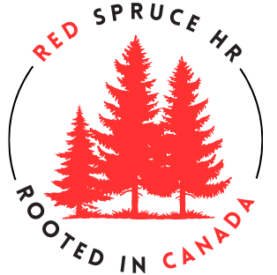The Difference-Maker for CHRP: Mastering the HR Mindset
You’ve done it. You’ve registered for the CHRP exam, your materials are stacked high, and your study schedule is set. You’re focused on memorizing employment standards, key HR theories, and legal precedents. This is the path to success, right?
Not quite.
Having navigated the HRPA certification process and spoken with many successful designees, one truth is clear. The biggest differentiator between passing and failing isn’t just what you study—it’s how you think.
The one thing everyone overlooks is mastering the HRPA Mindset or Professional Judgment.
The HRPA exams are designed to test more than recall; they test your application of the HR Competency Framework in realistic, complex scenarios. You can know the Canada Labour Code or the Employment Standards Act perfectly, but if you can’t apply that knowledge with critical thinking and professional judgment to a nuanced situation, you’ll find the questions challenging.
What is the “Professional HR Judgment” Mindset?
It’s the framework for thinking that is embedded in the HR Competency Framework. It’s the ability to:
- Analyze Situations: Identify all the components, stakeholders, and legal layers in a case.
- Weigh Risks & Impacts: Consider the legal, ethical, financial, and human resources implications.
- Apply Ethical Reasoning: Uphold the HRPA Code of Ethics and professional standards.
- Strategic Alignment: Consider how the decision supports both the employee experience and the organization’s health.
Let’s Make it Concrete: A Duty to Accommodate Example
- The Rote Memorizer thinks: “Step 1: Receive request. Step 2: Get documentation. Step 3: Explore options. Step 4: Implement.”
- The Professional Judgment Thinker thinks: “This employee is anxious about this process. My first step is to ensure a confidential, empathetic conversation to understand their functional limitations. The ‘exploration of options’ is a collaborative duty, not a checkbox. I must consider the undue hardship standard for our organization while thoroughly documenting the process to mitigate risk. The goal is a good faith effort to find a workable solution that retains a valuable contributor.”
See the difference? One is a process. The other is practiced, professional judgment.
Your First Actionable Tip:
As you tackle practice questions, pause. Before looking at the answers, run the scenario through this filter:
- What are the legal/regulatory requirements here? (e.g., Human Rights Code, ESA)
- Who are the stakeholders, and what are their perspectives? (The employee, the manager, the company, the union)
- What does the HRPA Code of Ethics advise in this situation?
- Based on 1-3, what is the most professionally sound, strategic, and ethical path forward?
This integrated approach is what the exams are truly testing for. This blog, Red Spruce HR, will help you build that muscle. We’ll break down the nine competencies of the HR Competency Framework, analyze practice questions, and prepare you not just for the exam, but for your career.
Now, tell me in the comments: what’s the toughest situational judgment question you’ve come across?
-
Let’s be honest: preparing for your CHRP or CHRL is a marathon. It requires precious time and energy, often after…
-
Congratulations on deciding to pursue your CHRP. It’s a commitment to your profession and a significant step in your HR…
-
The Difference-Maker for CHRP: Mastering the HR Mindset You’ve done it. You’ve registered for the CHRP exam, your materials are…
